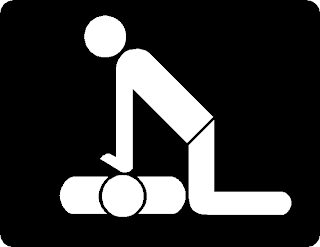Would you know what to do if an adult was suffering a heart attack or if a child was choking? Calling 911 is the first step, but immediately following up with cardiopulmonary resuscitation (CPR) will greatly increase his or her chance for survival.
CPR helps to maintain some blood flow to the brain and heart when the heart stops pumping on its own. This “buys time” until paramedics arrive and can save lives. When an individual suffers a heart attack outside of a healthcare setting, their survival could rely on receiving immediate CPR from a bystander. However, the American Heart Association (AHA) reports that less than one-third of these individuals receive the help they need because most bystanders are untrained in CPR and are afraid they will do something wrong.
In adults, heart attacks account for more than 350,000 deaths which occur before the victim reaches the hospital. The most dangerous period of a heart attack is during the first two hours after the onset of symptoms. In children under 5 years of age, choking is the fourth-leading cause of accidental death due to children putting small objects in their mouths and choking on certain foods such as raw carrots, grapes, hot dogs, and nuts.
CPR should be used in these situations to keep individuals alive until professional medical personnel have arrived. It is the only way to keep someone alive when both their heart and breathing have stopped.
New guidelines for CPR were released nearly a year ago on October 18, 2010 by the AHA. The original 3 steps have been rearranged in a more effective order. The old way was A-B-C – first establish an airway, perform mouth-to-mouth, and then apply compressions. The NEW way is C-A-B – for compressions, airway, and then breathing. It has been determined that it is more important to initiate the chest compressions immediately in order to increase the circulation of blood, which delivers oxygen throughout the body in order to keep the brain and cells alive.
You do not need to be a medical professional to know or use CPR. It is a life-saving skill that everyone should know, especially if you are a parent or caregiver. It can enable you to help someone in need. Once heart beat, lung function, and respirations have stopped, CPR can be performed. It is most effective when begun as soon as possible. The human body can only be deprived of oxygen for very few moments before irreversible damage and death occur. Waiting for an ambulance to arrive can waste precious minutes.
Providing CPR could mean the difference between life and death for someone who’s unconscious. Proper training is advised so that CPR can be performed safely and correctly when needed.
For CPR certification, contact your local hospital or American Red Cross chapter to see when they are offering certification courses. Getting certified can be accomplished in as little as one afternoon. Many of the SCA plant locations offer certification courses at specific times during the year. Talk to your Plant Nurse if you are interested in learning about when the next course begins.
SCA’s Barton, Alabama location is currently providing CPR certification classes to all employees throughout the fall. At this time, 48 employees have signed up, of which 10 have already completed the training. The course lasts about 2.5 hours and is provided by 2 certified employees. Barton employees are becoming skilled and ready to provide CPR in emergency situations in or out of the work setting. SCA's Bowling Green, Kentucky location will offer a course in early October.
Greg Robinson (left) and Jeff Curtis observe Bruce Newton practicing chest compressions on “Annie.”
Additional resources:




No comments:
Post a Comment